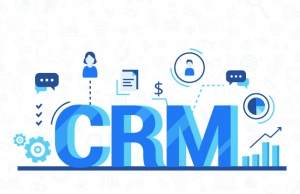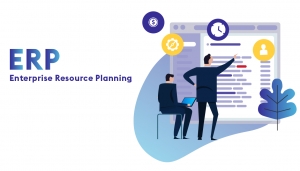عرض العناصر حسب علامة : CRM
الإثنين, 18 يوليو 2022 11:26
أنظمة إدارة علاقات العملاء CRM
في عالم يتوقع فيه العملاء ان يجدوا الخدمة في أي مكان وزمان، تحتاج الشركات إلى أنظمة وعمليات إدارة علاقات العملاء فعالة (CRM) للبقاء في الصدارة ولكن كيف يمكن ذلك؟
نشر في
موضوعات متنوعة
موسومة تحت
الإثنين, 20 يونيو 2022 11:25
التخطيط الاستراتيجي للسوق
معلومات إضافية
-
المحتوى بالإنجليزية
Market Planning
The process of organizing a company's marketing goals and gathering strategies and tactics to achieve them
What is Market Planning?
Market planning is the process of organizing and defining the marketing aims of a company and gathering strategies and tactics to achieve them. A solid marketing plan should consist of the company’s value proposition, information regarding its target market or customers, a comparative positioning of its competitors in the market, promotion strategies, distribution channels, and budget allocated for the plan. All relevant teams in the organization should refer to the marketing plan.
Market Planning for Small Businesses
Over the last few decades, more individuals have been starting a journey as a small business entrepreneur. Unfortunately, many fail to reflect on their marketing strategy and plan. Like other things in a project, marketing the organization is an essential decision that starts with a plan every time. In order to get noticed in the market with a unique and consistent promotional strategy, becoming knowledgeable about market planning and its facets is crucial.
Stages of Market Planning
The first stage of market planning involves sales projections and evaluations of past promotional activities to assess their effectiveness. The process of analyzing a product enables a company to identify which areas of the plan should carry a heavier focus or which areas should be adjusted. The analysis not only involves evaluating the company’s competitive position in its respective market but also considering how to implement new strategies for its business goals.
The second stage is to organize marketing objectives and strategies. It is crucial here to establish the relationships between the proposed activities so the plan can be carried out efficiently.
Top Market Planning Concepts
Although there are a number of marketing planning concepts to be considered, the following are a few important aspects that should be included:
Market Segmentation and Target Markets
Knowing who makes up the market the product or service plays in is crucial, yet the importance of this aspect is often overlooked. Market segmentation involves assessing the whole population that could be potential customers of your product and then segmenting them based on varying criteria. Some examples of aspects to filter for are purchase behavior, psychographics, age, and average income.
After the market has been segmented, the company must choose the group that it believes its product can best serve and is within the budget to advertise to. This segment then forms your target market. It is generally recommended for businesses to have one target market and then a few secondary ones if they see fit.
To illustrate, a company that sells colored contacts may have a primary target market of makeup artists in the film and theater industry. However, they may find that there is significant revenue to be found in entering more mainstream channels and marketing to women in their twenties who wish to experiment with new eye colors on special occasions. They would then spend the majority of their resources marketing to their primary target market, but also allocate some marketing budget to the latter segment for additional revenue.
The main reason why market segmentation and targeting is important is that a company should always be focusing its resources on the most profitable group of customers, so knowing which group that is, is a prerequisite.
Budget
Budgeting may be the most important term in marketing planning when it comes to execution. Often, in order to secure funds from top management or banks, sufficient proof of your advertising plan’s success is needed. It requires accurate forecasting of returns generated by individual advertising expenditures. It is important that returns are not overestimated to avoid spending too much and running out of money early on.
Marketing Mix
The marketing mix is a combination of elements that influence customers to purchase a product. The marketing mix includes four main factors – Product, Price, Place, and Promotion. Product refers to either the tangible good that your business offers or the intangible good, referring to services. Key decisions made under this umbrella are branding, product design, package and labeling details, warranties, and more.
Price can quite simply be the quantitative price the company’s customers must pay to acquire its product. However, thorough marketing plans will also consider other sacrifices a customer must make, such as travel time, shipping costs, or research time before they find the product. Customer perceived value is also a key consideration when it comes to price. Key decisions under this umbrella include price-setting, pricing strategies, discounts, accepted payment methods, and more.
Place refers to where customers can contact the business and purchase its products. Providing convenience and access to the company’s customers is the goal. Key decisions under this umbrella include distribution, channels, partnerships, locations, transportation, and logistics.
Promotion covers all the marketing communications the company undertakes to make its product known and shape the customers’ image of its product. Key decisions here involve promotional mix, message content, message frequency, media strategies, and more.
Customer Relationship Management (CRM)
Customer relationship management (CRM) is a key factor in maintaining loyalty after a company has achieved a sustainable number of customers. There are numerous software solutions on the market to handle CRM for a company. For small businesses, however, keeping such activities in-house may be recommended to keep the company lean. Things such as offering warranties and return policies can help keep customers satisfied and let them know that the company cares about their use of the product post-purchase.
Key Takeaways
Market planning is a constructive process that facilitates careful consideration of a company’s marketing objectives and product mix so that resources allocated to advertising plans and branding yield optimal returns. While some facets may be unique for each business, key concepts such as market segmentation, target markets, marketing mix, budgeting, and CRM, are applicable in all cases.
نشر في
موضوعات متنوعة
موسومة تحت
الأربعاء, 16 مارس 2022 13:07
ما هي محاسبة تخطيط موارد المؤسسات؟
تعد أنظمة تخطيط موارد المؤسسات (ERP) من بين أكثر منصات تكنولوجيا المعلومات شيوعًا في السوق، خاصةً للمحاسبة. ولكن هل لا يزال هذا هو الحال، أم أن الحلول المحاسبية لتخطيط موارد المؤسسات أصبحت قديمة؟
معلومات إضافية
-
المحتوى بالإنجليزية
Enterprise Resource Planning (ERP) systems are among the most popular IT platforms on the market, particularly for accounting. But is this still the case, or have ERP accounting solutions become outdated?
ERP ACCOUNTING
How Does ERP Manage Digital Accounting?
ERP refers to an IT stack that supports a variety of business functions like operations and specialized industry functions like manufacturing tasks. Of course, one of its original features, and what it’s most known for, is accounting. ERP accounting streamlines the digital accounting process in two ways:
1. Interconnected Solutions
ERPs are IT platforms – similar to the newer customer relationship management (CRM). ERPs house different but interconnected applications related to individual business practices that can share relevant data with the accounting system. The goal is to have a system of integrated solutions that can house the same data. In accounting, there are different solutions that initiate transactions or document projects that are directly connected to the accounting software interface. This saves time by eliminating manual data entry into the general ledger.
2. Defined Process Structure
ERPs provide a defined, occasionally rigid operational structure to the processes on the platform. This includes accounting. This serves to establish organization and consistency in various operations. For digital accounting, financial processes usually are structured in the most common formatting or based on standard practice.
What Are Some Benefits of ERP Accounting?
ERP accounting software has significant advantages over standalone accounting software. This is due to the fact that the accounting system is pre-connected with other business tools.
Everything you do in business touches accounting, whether it’s the projects you’re funding or producing for customers or the marketing efforts behind your sales engine. Finances define all that you do. Applications connected to the ERP share data surrounding return-on-investment, sales numbers, operating costs, assets, and liabilities with accounting system. This means no more having to hunt down and manually re-enter and validate accounting data. This data connectivity offers several key benefits:
1. Enhanced Productivity
ERPs help eliminate the need for manual data entry and having to work between different applications. Because the accounting data is centralized on the ERP, staff can complete accounting processes faster. This also frees staffs’ time to focus on higher-priority tasks instead of re-typing or looking up info.
2. Streamlined Accounting Process
Because accounting data is centralized and automatically shared to the accounting system, staff can perform billing, reporting, and accounts receivable much more efficiently. This also means the accounting process doesn’t have to be interrupted by data entry and validation. If the accounting ERP enables high-level automation, financial management gets even easier and more effective.
3. Data Accuracy
One of the leading benefits of cloud-based technology is that you can link your essential business applications on the cloud to the accounting system. Besides saving time, this is critical for data accuracy, which is, of course, crucial for accounting. Because the transactions that run in different applications connect instantly to the accounting system, the information isn’t lost or at risk of being re-entered incorrectly. This also gives users a single cohesive data trail to re-check accounting entries for due diligence.
4. Cost Savings
Because your business tools seamlessly connect to your accounting system, ERP accounting can reduce expenses of both time and money. With increased accuracy, costly accounting errors can be avoided or corrected to reduce damage. This streamlined accounting frees team members from meticulous accounting chores like correcting spreadsheets.
Interested in learning how Automation can cut down costs and improve efficiency in your back office? Download our Automation Guide today to learn more.
Are There Limitations to ERP Accounting?
There are definitely some downsides to traditional ERP. ERP’s strength can also be a hindrance to those requiring more flexible solutions. ERP’s legacy IT structure is designed to give pre-defined functionality and set processes. This is meant to give users a strong base to manage key tasks. As mentioned earlier, this is great for consistency. However, this approach can become an obstacle to innovation and change.
Traditional ERP lacks the emphasis on customization that CRM built its system around. In today’s business world, software customization is mission-critical. Most companies rely on unique business models and practices, even within the same industry. Shaped by the early attitudes of computer technology, ERP didn’t evolve the same way CRM did. Early ERP developers didn’t imagine how its features could be manipulated for better use or further interconnected with other tech.
Is ERP Accounting Still Valuable?
Absolutely, especially more modern, flexible ERP accounting solutions. Two of the main reasons CRM came to surpass ERP are its focus on the customer/sales process and flexibility. But what if ERP was to adopt these qualities and maximize the customer’s accounting potential through highly customizable and configurable IT solutions. This is where Accounting Seed’s ERP accounting comes in.
Accounting Seed is Your Salesforce ERP Accounting Solution
Built on the Salesforce CRM, with a CRM mindset, Accounting Seed leverages the best of both IT platforms. Accounting Seed is the most flexible accounting platform on the market. But that’s not all. Our ERP prioritizes automation, making it easier for businesses to harness and utilize their accounting data. Sign up for your free demo to see how.
نشر في
موضوعات متنوعة
موسومة تحت



